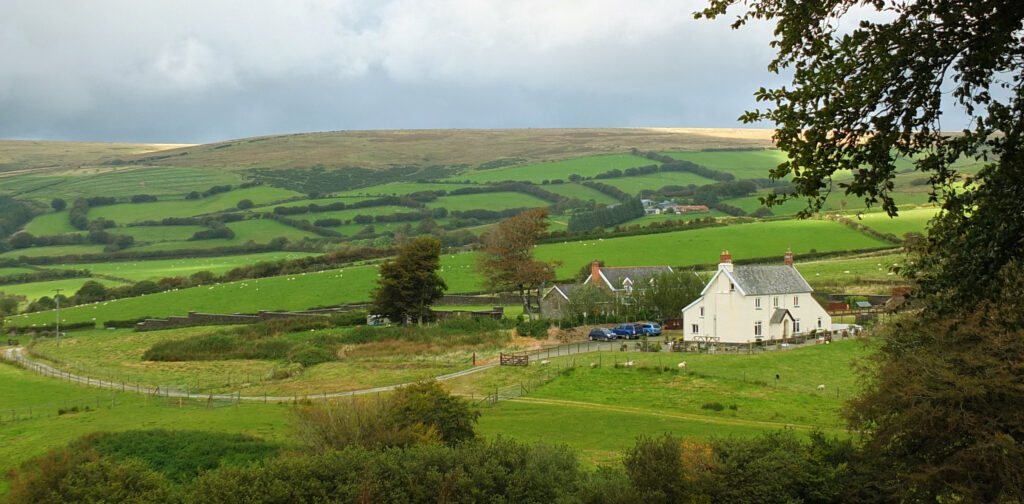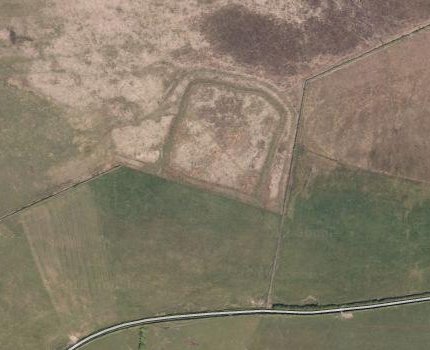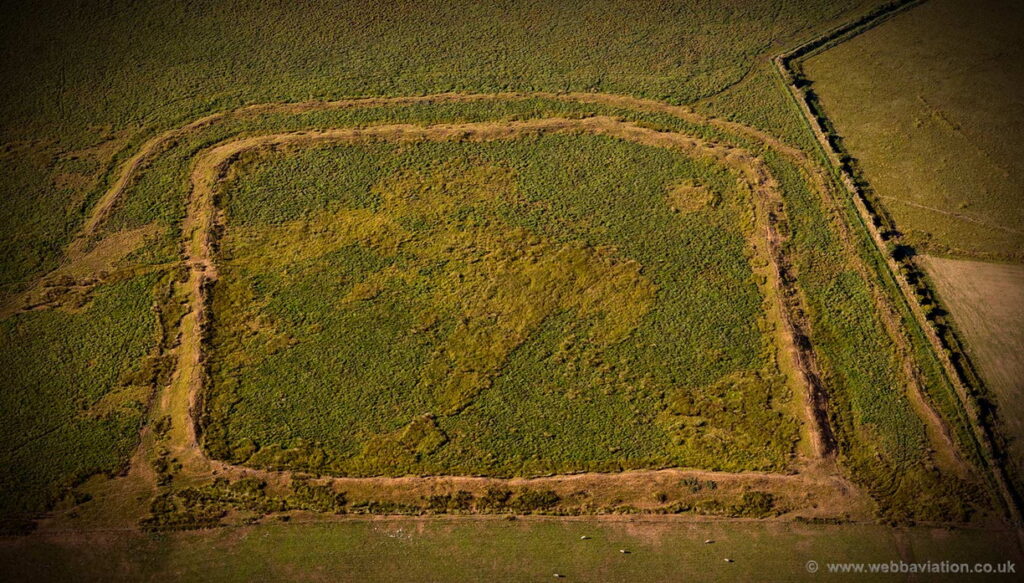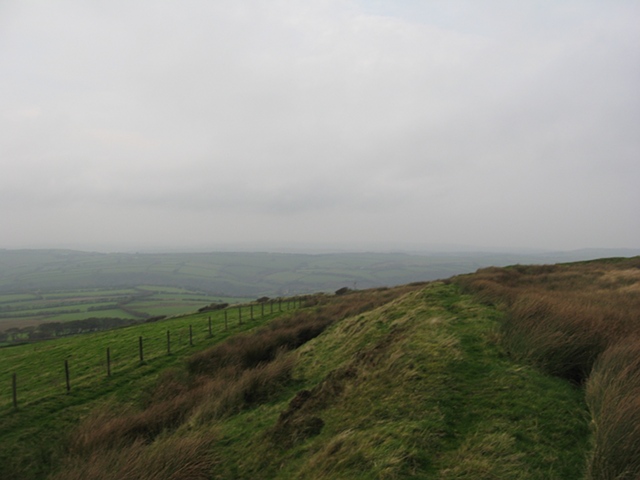
Challacombe is a traditional rural dispersed settlement about 10 miles from the north coast of Devon, with a population of about 150 people in 50 dwellings. It is the highest parish in North Devon and most of the parish lies within the Exmoor National Park.
Challacombe has been occupied for thousands of years. The surrounding hills have standing stones form the Neolithic period; ring barrows from the Bronze Age and a large Iron Age hillfort (Shoulsbury) which offers spectacular views over the Taw estuary. By legend it was occupied by St. Petrock in the C6th and defended by Alfred the Great against the Danes in the C9th. It is also possible, given its imposing site and position, its unusual name (perhaps from the Celtic god Sulis and Saxon word meaning fortified) and its nearness to the Harepath, the Saxon “war road” across Exmoor, that this is where the Celtic King Geraint was defeated by the Saxons in 710AD.

The name Challacombe from the Saxon for chilly valley was first recorded in Domesday in 1086. Holy Trinity church built at Barton Town in the C13th still dominates the skyline. Barton Town was the mediaeval focus of the village but in the early C19th it moved to East Challacombe, or Challacombe Town which is the present focus of the village; around the shop and the unusually named Black Venus Inn.
Thanks a million for a perfect, relaxing and interesting stay. It’s a beautiful home and farm.
Visitors’ Book 2025

Shoulsbury Castle
Shoulsbury Castle is perhaps the largest and best known of the defensive earthworks on Greater Exmoor. Early forms of it include Solsbury (Westcote 1630), Shorsbery (Risdon 1630), Salusbury (1815), Shoulsbury (1819), Showlsborough (Page 1890) and Shoulsbarrow (present OS maps). The root may therefore be the same as Solisbury above Bath, which seems to be named from the Roman-Celtic god Sulius Minerva to whom the Roman baths at Bath were dedicated. There is much to be said for calling it Shoulsbury (which conforms to local pronunciation) in preference to Shoulsbarrow which implies confusion with sepulchral mounds.
Shoulsbury is situated on a south-western spur of the main western scarp of Exmoor, and water could have been obtained from tributaries of the river Bray which rises on the hill slopes within half a mile. The earthwork is bivallate (ie with two defensive ditches) excepting on the south where the steep scarp makes a second rampart unnecessary. Original entrances may have been in the middle of the west side of the inner rampart, and near its south east corner.


It has already been observed that the sub-rectangular plan, the similarity of this plan with that of the known Roman fortlets at Martinhoe and Old Burrow (County Gate), and the slightness of the ramparts for a normal hill-fort, all cause some of us to wonder if it is Iron Age or Roman. The inner earthwork encloses about four acres and the outer earthwork about six in all. Within the north-east corner R.R.Clarke noted a circular mound about eleven yards in diameter which he conjectured might have been the base of a watchtower if it is not the remains of a round barrow.
It has been said that two rapiers of c17th century date, ‘no doubt lost in some minor skirmish of the Civil War’, were found towards the end of the last century at Shoulsbury Castle.

Local amenities
For a small rural UK community, Challacombe has excellent local amenities.
A traditional award winning pub, The Black Venus Inn, serves very good home- made food, fine wines and real ales. Believed to be the only inn in England bearing this name, it is a splendid old stone-built historic 16th century building, full of Devon character and charm with low ceiling and original beams.
There is also a shop with a Post Office and local Information Point. The shop stocks a variety of guide books, snacks, groceries and alcohol.
Holy Trinity Church at Barton Town has services on the second Sunday in the month at 11.15am and fourth Sunday at 6.30pm and also at the Methodist Chapel in the village at 6.30pm on the first Sunday in the month.